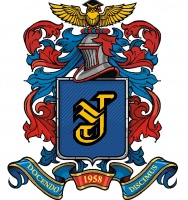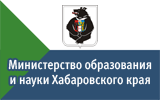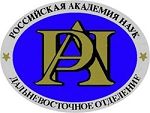Дальневосточный математический журнал
Исследование модели эволюции менделевской однолокусной полиаллельной популяции с экспоненциальным плотностно зависимым отбором |
О. Л. Жданова, Е. Я. Фрисман |
2004, выпуск 2, С. 250–262 |
Аннотация |
| В работе исследуется обобщение модели менделевской однолокусной диплоидной популяции, находящейся под действием экспоненциального плотностно зависимого отбора, на полиаллельный случай. Найдены все мономорфные стационарные точки полиаллельной модели и условия их устойчивости. Построена система уравнений для отыскания полиморфных стационарных точек. Доказан ряд утверждений, устанавливающих зависимость между взаимным расположением ресурсных параметров генотипов и численностью популяции в каждом из полиморфных стационарных состояний. Кроме того, аналитически показана связь между взаимным расположением ресурсных параметров генотипов и устойчивостью полиморфных стационаров. |
Ключевые слова: менделевская однолокусная полиаллельная популяция, стационарные точки, мономорфная, полиморфная, устойчивость |
Полный текст статьи (файл PDF) |
Библиографический список |
| [1] В. А. Ратнер, Математическая популяционная генетика (элементарный курс), Наука, Новосибирск, 1977. [2] R. C. Lewontin, The genetic basis of evolutionary change, Columbia university press, New York and London, 1974. [3] Ю. М. Свирежев, В. П. Пасеков, Основы математической генетики, Наука, М., 1982. [4] S. Karlin, “Some natural viability systems for a multiallelic locus: A theoretical study”, Genetics, 97 (1981), 457–473. [5] S. Karlin and M. W. Feldman, “A theoretical and numerical assessment of genetic variability”, Genetics, 97 (1981), 475–493. [6] A. G. Clark and M. W. Feldman, “A numerical simulation of the one-locus, multiple-allele fertility model”, Genetics, 113 (1986), 161–176. [7] S. Gavrilets, “One-Locus Two-Allele Models With Maternal (Parental) Selection”, Genetics, 149 (1998), 1147–1152. [8] J. M. Cheverud, “Evolution by kin selection: a quantative genetic model illustrated by maternal performance in mice”, Evolution, 38 (1984), 766–777. [9] M. Kirkpatrick and R. Lande, “The evolution of maternal characters”, Evolution, 43 (1989), 485–503. [10] R. Lande and M. Kirkpatrick, “Selection response in traits with maternal inheritance”, Genet. Res., 55 (1990), 189–197. [11] L. R. Ginzburg and D. E. Taneyhill, “Population cycles of forest Lepidoptera: a maternal effect hypothesis”, J. Anim. Ecol., 63 (1994), 79–92. [12] M. J. Wade and R. W. Beeman, “The population dynamics of maternal-effect selfish genes”, Genetics, 138 (1994), 1309–1314. [13] J. M. Сheverud and A. J. Moore, “Quatitative genetics and the role of enviroment provided by relatives in behavioral evolution”, Quatitative Genetics Stadies of Behavioral Evolution, ред. C. R. B. Boake, University of Chikago Press, Chikago, 1994, 67–100. [14] M. J. Wade, “The evolutionary genetics of maternal effects”, Maternal Effects of Adaptations, eds. T. A. Mousseau and C. W. Fox, Oxford University Press, New York, 1998, 5–21. [15] J. B. Wolf, E. D. Brodie, J. M. Cheverud, A. J. Moore, M. J. Wade, “Evolutionary consequences of indirect genetic effects”, Trends. Ecol. Evol., 13 (1994), 64–69. [16] H. G. Spencer, “Further Properties of Gavrilets' One-Locus Two-Allele Model of Maternal Selection”, Genetics, 164 (2003), 1689–1692. [17] K. P. Hadeler and U. Liberman, “Selection models with fertility differences”, J. Math. Biol., 2 (1975), 19–32. [18] M. Doebeli and G. de Jong, “A simple genetic model with non-equilibrium dynamics”, J. Math. Biol., 36 (1998), 550–556. [19] R. M. May, “Bifurcations and dynamic complexity in ecological systems”, Ann. NY Acad. Sci., 316 (1979), 516–529. [20] L. Altenberg, “Chaos from linear friquency-dependent selection”, Am. Nat., 138 (1991), 51–68. [21] M. A. Asmussen, “Regular and chaotic cycling in models of ecological genetics”, Theor. Popul. Biol., 16 (1979), 172–190. [22] A. Hastings, “Stable cycling in descrete-time genetic models”, Proc. Natl. Acad. Sci. USA, 78 (1981), 7224–7225. [23] E. Akin, “Cycling in simple genetic sistems”, J. Math. Biol., 13 (1982), 305–324. [24] J. Hofbauer, “The selection mutation equation”, J. Math. Biol., 23 (1985), 41–53. [25] R. Burger, The mathematical theory of selection, recombination and mutation, Wiley, Chichester. UK, 2000. [26] H. G. Spencer, R. W. Marks, “The maintenance of single-locus polymorphism. I. Numerical studies of a viability selection model”, Genetics, 1988 (120), 605–613. [27] H. G. Spencer, R. W. Marks, “The maintenance of single-locus polymorphism. IV. Models with mutation from existing alleles”, Genetics, 130 (1992), 211–221. [28] A. Hastings, “Stable equilibria at two loci in populations with large selfing rates”, Genetics, 109 (1985), 215–228. [29] A. Hastings, “Multilocus population genetics with weak epistasis. I. Equilibrium properties of two-locus two-allele models”, Genetics, 109 (1985), 799–812. [30] A. Hastings, “Multilocus population genetics with weak epistasis. II. Equilibrium properties of multilocus models: what is the unit of selection?”, Genetics, 112 (1986), 157–171. [31] A. Gimelfarb, “Genotypic Variation for a Quantitative Character Maintained Under Stabilizing Selection Without Mutations: Epistasis”, Genetics, 123 (1989), 217–227. [32] L. A. Zhivotovsky, M. W. Feldman, “On Models of Quantitative Genetic Variability: A Stabilizing Selection-Balance Model”, Genetics, 130 (1992), 947–955. [33] J. Rougharden, “Density dependent natural selection”, Ecology, 52 (1971), 453–468. [34] B. Charlesworth, “Selection in density-regulated populations”, Ecology, 52 (1971), 469–474. [35] M. A. Asmussen, “Regular and chaotic cycling in models of ecological genetics”, Theoretical population biology, 16:2 (1979), 172–190. [36] M. A. Asmussen, “Density-dependent selection incorporating intraspecific competition. II. A diploid model”, Genetics, 103 (1983), 335–350. [37] M. A. Asmussen, R. A. Cartwright, H. G. Spencer, “Frequency-dependent selection with dominance: a window onto the behavior of the mean fitness”, Genetics, 167 (2004), 499–512. [38] M. A. Asmussen and E. Basnayake, “Frequency-Dependent Selection: The High Potential for Permanent Genetic Variation in the Diallelic, Pairwise Interaction Model”, Genetics, 125 (1990), 215–230. |






